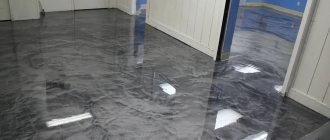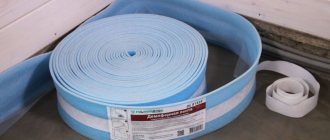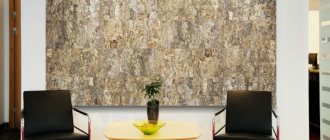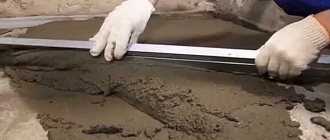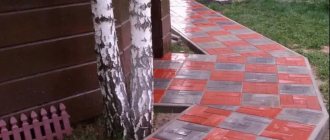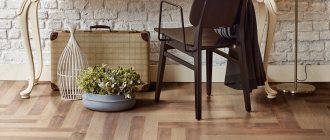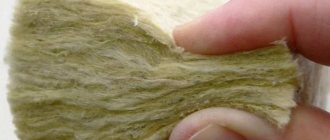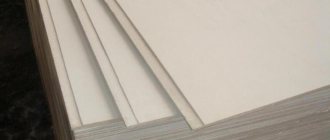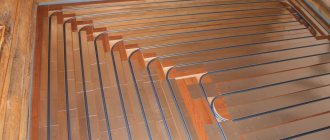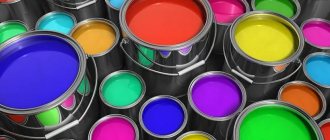There are several types of flooring. You just need to have a certain amount of funds, and the catalog in special services will offer you different smooth, embossed, warm, cold, colored and neutral options. But what to do if you want to save on floor coverings and don’t want to rely on craftsmen? Filling the floor with epoxy resin is a rational solution in such a situation.
How to make an epoxy floor with your own hands? – we tell you below. We will also give advice on this process, consider its features, disadvantages and advantages.
Pros and cons of polymer floor coverings
There are two types of self-leveling floors: organic binder and polymer. On organic it is based on Portland cement and gypsum, on polymer it is made of acrylic and polyurethane. Despite the fact that they are all “liquid”, they have quite serious differences. So we need to clarify what specific type we are talking about. We'll take a closer look at acrylic, touching on polyurethane along the way. These are the advantages of polymer flooring.
Two-component epoxy floor coating just needs to be mixed and applied.
- Polymer self-leveling floor spreads much better, even expensive compounds with organic binder. Their minimum layer is 1 mm, on cement or gypsum binder - from 5 mm. And if you use polymer-based paints, the layer will be from 0.5 mm.
- They do not generate dust, even after the top layer is worn out, because there is nothing to generate dust. According to the technology, the concrete base is primed, and then a polymer composition is applied. So, the soil itself makes the concrete low-dust. This, by the way, is the cheapest and most effective way to remove dust from concrete.
Epoxy self-leveling floor - the most hygienic coating - And the polymer coating wears out much less than even high-quality concrete coatings. The leader here is polyurethane - it is almost indestructible. But even good quality epoxy resin, especially with mineral fillers, wears off very little. Less than M500 concrete.
- Polymer self-leveling floors (PNP) do not peel off. Or rather, you need to greatly violate the technology (not use a primer or the wrong composition, apply it to wet concrete) for this to happen.
- Due to elasticity they absorb shocks. Chips and dents appear rarely, from very serious loads.
Epoxy coating is durable, beautiful, hygienic - Polymers - epoxy resin and polyurethane - do not allow moisture to pass through. Some species also do not carry out steam. This seems good, but if it is guaranteed not to get wet from below. That is, in order not to flood the neighbors below, this is an excellent choice. But laying it on the ground can be dangerous. If the waterproofing on the lower layers leaks, the water, unable to find a way out, will undermine the coating.
The disadvantages of polymer self-leveling floors are serious, but there are not so many of them. The main one is the price. They cost 10 times more than good brands of self-leveling floors based on cement or gypsum. But their consumption can be several times less - they begin to level out from a few millimeters. However, in order for the layer to be small, the base must be perfectly flat. And this is not easy. And one more point: it is better to pour polymers onto a base with a cement binder. They adhere less well to plaster. Well, the disadvantages include the fact that they get scratched and become less attractive. True, the attractiveness is restored after polishing.
A little materiel for educational purposes
Epoxy resins are oligomers containing epoxy groups and, under the influence of various hardeners, are capable of forming cross-linked polymers. That is, epoxy is not used in its original form. The resin receives all the characteristics for which it is so valued only after the polymerization process when reacting with hardeners.
Epoxy has the following properties:
- resistance to the action of halogens, that is, elements of the 17th group of the table of elements: fluorine, chlorine, bromine, iodine, astatine; which are strong oxidizing agents;
- resistance to a number of acids (except strong oxidizing agents) and alkalis;
- has high adhesion to metals;
- looks like a yellow liquid, similar to honey, or a brown mass, similar to tar.
If the resin is cured using the correct technology, then it is harmless. The uncured consistency is quite toxic, so you must work with epoxy in compliance with safety precautions.
Shrinkage of the material after hardening is minimal.
Types of Epoxy Floor Coatings
Epoxy floor coating is a composition based on epoxy resin. This type of self-leveling floor is cheaper than polyurethane, but still much more expensive than cement. It can be one or two-component (consists of components A and B). Poured onto a concrete base. The minimum layer is 1.5 mm, the maximum is 4-4.5 mm. Usually they try to make the layer smaller, since the material is expensive. This is only possible on a flat concrete floor. To reduce consumption, preliminary priming is carried out. There are special priming compositions, but you can also use a diluted base composition.
You can make an epoxy self-leveling floor with your own hands. I mean, you can mix, pour and distribute
Epoxy self-leveling flooring can be transparent or dyed in the paste. Painted ones can be plain or with color transitions. You can fill it in stages, creating patterns and designs. The surface can be glossy with varying degrees of gloss, or it can be matte. Those same 3D floors are the same transparent polymer compound applied to a picture spread on the floor.
Fillers may be added to clear or colored compositions. Both natural - stone or mica chips, for example, and artificial - various sparkles, phlox, etc. In general, the appearance is varied.
Properties, positive and negative points
Epoxy self-leveling flooring is not that new. It just began to be used not so long ago - 10-15 years ago. It’s worth saying right away that before hardening, epoxy resin releases toxic substances. Therefore, you need to work in a respirator. Just a “ventilated room” will not provide the required level of safety - you can get poisoned. So if you are going to pour epoxy floors yourself, stock up on protective equipment.
Even if you are making an epoxy floor only for yourself, and will not do it professionally, you need protective equipment. The main thing is a respirator and a protective suit
pros
Why is it still used? After all, it’s expensive and unsafe... But because the properties of epoxy self-leveling flooring are ideal for some industries or situations:
- Very “sanitary” coating. Doesn't absorb or absorb anything. Resistant to oils, chemicals, paints. Everything spilled on the surface remains. Due to this property, it is always easy to wash/clean. Therefore, it is often used in industries where hygiene is very important.
Epoxy resin flooring is not perfect, but it is hygienic. In the bathroom, shower, toilet, hallway and kitchen - this is perhaps the best option - Dense, smooth, durable. The surface is smooth and hard. There may be problems with household use, since the surface is slippery when wet. There are non-slip variations with quartz sand, but they are good for industrial premises, garages, etc. They are not used at home because, well, they don’t look “homey” at all, and they are difficult to clean. There are also those in which dullness and some roughness are achieved by adding special substances. A small layer of matte resin forms on the surface. But under significant load, it can wear out, which looks unsightly. In principle, it is almost impossible to erase epoxy resin in the house. And for production, such coverage requires updating.
- Epoxy flooring feels a little “softer” than tile. Due to its greater elasticity, it absorbs shock loads better. But if you drop something really heavy, it may chip.
The positive aspects include the seamlessness of the coating. You can also have the degree of gloss that you need. In some interiors, such a floor is simply a godsend. And it is difficult to replace it with something else.
Minuses
The disadvantages of acrylic self-leveling floors include high requirements for the base (more details below). Another minus is that the epoxy self-leveling floor is not as wear-resistant as we would like. Wheeled chairs will leave marks on it. It also gets scratched by high-heeled shoes. Where they walk more, changes will be clearly visible - less shine, more scratches. The appearance is restored by sanding, but with a coating thickness of several millimeters, you can’t sand it much.
Epoxy coating is the sequential application of polymer-based materials to a concrete base.
For longer service without changing the appearance, it is recommended to apply two layers of polymer (polyurethane) varnish over the epoxy coating. Polyurethane is much stronger and scratches less often. Why not use a self-leveling polyurethane compound then? But because it turns out to be almost twice as expensive.
Epoxy resin flooring is repairable. Yes, chips and dents can be filled. But the “repair zone” will be visible. For industrial premises this is not a problem. This is not very good for offices and apartments/houses.
Another disadvantage emerges from its advantage: complete impermeability to any substances. That is, the epoxy self-leveling floor does not conduct water and its vapors. If it is poured onto a concrete slab in ground floors, moisture entering through imperfect insulation can tear off the polymer layer from the base.
Is it possible to make a self-leveling epoxy floor yourself? Yes. Buying it is not a problem, and no special equipment is required for application. But you need a flat, dry concrete surface and knowledge of some of the features of the process
All these shortcomings would be more or less tolerable even for use in private houses and apartments. But the high price neutralizes all the advantages. For the same price you can make more practical coatings. But it is, of course, up to you to decide. From an aesthetic point of view, it is difficult to find a replacement. It is difficult to make an absolutely smooth surface, shiny or not, by other means. An alternative is to pour a self-leveling cement floor and cover it with polymer (even epoxy or polyurethane) paint. Costs are lower, the effect is the same. It’s still difficult to come up with other options.
How to choose?
When choosing self-leveling epoxy floors, you should pay attention to two factors.
First, the emulsion composition must be suitable for future use. Depending on the expected loads of a mechanical or chemical nature, it is necessary to select the appropriate epoxy composition.
The second factor is the design decision. If we are talking about covering industrial structures, then there is no need for excessive sophistication. However, for private homes and especially for restaurants and cafes, it is very important to choose the right color palette and floor pattern.
3D effects have recently become popular for bathrooms. You can use photographs, but you should be careful with them, because the design cannot be changed over time.
If there are no special requirements for the originality of the floors, then you can opt for a quartz coating. It is cheaper and also stronger.
Surface Requirements
Epoxy self-leveling flooring can only be applied to a stable, rigid base. All floors that may experience vibration are not suitable. Only a concrete slab. Moreover, the concrete must be dry. Here is a list of requirements:
- The grade strength of concrete is not lower than M250 (some compositions allow M200).
- Residual humidity - no more than 4%. You can check the humidity using a piece of thick plastic film and tape. Glue a piece of polyethylene to the floor and leave it for a day. If there is no moisture on the film, the humidity is normal. Epoxy self-leveling flooring can be applied.
- Floors on the ground must have high-quality waterproofing.
The floor surface must be clean, level and dry - If the concrete floor has been used, the top layer must be removed. There should be no oil or paints. Only concrete, preferably with open pores. If the screed is “fresh” (but definitely already dry), you don’t have to sand it. If it has been used and the top layer has worn out in places, it must be removed completely.
- The screed must be cut off from the walls with damper tape.
- Before applying the epoxy coating, remove dust with an industrial vacuum cleaner.
To reduce the consumption of epoxy self-leveling floor, the base is first primed. To do this, use a special primer or a base composition diluted with a solvent. Check with the manufacturers for details, as there may be quite significant differences.
Selection of possible designs
Self-leveling floor with a decorative layer
Decorating an epoxy floor can be done in different ways. For example, decorative tips are poured onto a floor that has not yet hardened. In addition, after the floor has dried, the surface can be painted with acrylic paints. For an apartment, hand painting would be an ideal option. For example, you can order a banner network from a printing house. Any digital coating with the necessary resolution will be applied to it. A cheaper option would be to apply a graphic image, which is done using vinyl stencils. Well, if you want to create chic floors, then you can print a 3D image using special microlenses. You can order them from an advertising agency or a printing company. When the decorative layer is fixed, the finishing layer of coating is applied. Often the final glossy layer distorts the image. Therefore, you can use polyurethane matte varnish.
What Tools Are Needed to Apply Epoxy Coating to Concrete Floors?
To pour an epoxy floor, you need tools. Not to say that something special is needed, but the list is solid. It won't be possible to do without them.
- Wet feet. These are boots with soles on rods. They leave no traces. You need to step in them, not slide or shuffle. If you pull them across the surface, stripes remain.
- Rollers for priming. The pile should be made of polyamide or nylon with a length of 10-12 mm. You can apply the primer with a flat spatula, but this requires some skill.
It is better to distribute the composition using a notched spatula. To make it easier to work, tie it to a holder - Stainless steel notched spatula. To evenly distribute the epoxy self-leveling floor, use a notched trowel. “Liquid” does not mean that they do not need to be distributed. This means that the composition spreads on its own, but you still need to help it. The use of a spatula allows you to quickly and evenly “disperse” the composition. The lifespan of two-component epoxy floors is not that long, so you have to work quickly. To do this, the height of the “tooth” must be equal or approximately equal to the thickness of the layer. Please note: new spatulas are coated with a layer of lubricant. If it gets into the epoxy composition of the self-leveling floor, there will be defects in the surface. Therefore, before use, soak the spatulas in a solvent (solvent or xylene). After four hours, remove and wipe dry.
- A needle-shaped metal or polymer roller with a long handle. When the resin is poured onto the floor, air bubbles appear in the resin. To remove them you need a needle roller. After the composition has been distributed over the floor surface, it is rolled. The needles remove air bubbles and at the same time distribute the polymer more evenly. The roller must also be clean. No traces of old paint, oils or other contaminants. The roller itself should rotate easily around its axis.
What tools and supplies are needed for the job? - Mixer with adjustable speed. You will also need a mixer with attachments for mixing. The recommended minimum power is 1 kW, and it should also be possible to change the speed. They will need to be selected in order to mix the composition well.
To mix the composition, you will need clean and dry plastic containers with high sides. Metal (old buckets) is not suitable. If you need to divide the composition into portions (fill two rooms or do a batch filling), you will need electronic scales. In principle, you can use kitchen ones. If only the measurement limit was sufficient.
Technology and features of work
When using two-component epoxy self-leveling floors, it is important to mix them well. The dishes are selected in such a volume that at least half is free. The mixing container must be absolutely clean and dry. If you will not mix the entire volume, but only a part, it is better to measure it by weight. Place the dishes on the scale, reset the container to zero and pour in the main component. Then zero again and add hardener. You need to pour it in a thin stream. As soon as the weight reaches the desired value, we stop.
If you need a single-color composition, tinting takes place in the store. And you add hardener and all sorts of “decorations” at home
How to mix epoxy self-leveling floor components
The mixing area must be removed from the room where you will be pouring the floor. It is best to spread double film over a large area. It is necessary to ensure that unmixed components do not fall into the pouring area, otherwise blisters and delaminations will appear in these places. The compositions can be on clothing or shoes. Therefore, it is advisable that two people work - one stirs the mixtures, the other pours/levels.
When mixing components, you must follow certain rules
When the compounds are poured into a container, try to keep the walls clean. First, pour component A. If it contains glitter or other filler, mix it for a couple of minutes until the inclusions are evenly distributed. Then the second component (B) is poured in and mixed for another 3-4 minutes. If you need to introduce some other filler (quartz sand, for example), add it all at once and mix until smooth.
When mixing, make sure that there are no unmixed areas. The walls of the dish, the edges, the bottom. Everything needs to be carefully processed. When stirring, you need to select the speed so that the entire composition moves. This creates a funnel. Its depth should be approximately 1/4 of the total thickness of the material in the container. When the composition becomes homogeneous, leave it for 2-3 minutes to allow the air to escape. Then they pour it all out and distribute it all at once.
Primer Features
The primer for epoxy self-leveling flooring is applied to a clean open-pore concrete floor - without a top film. The film is removed using grinders. At home, use a grinder with a disc. The garbage is removed, the dust is swept away, and the remains are collected with a vacuum cleaner. Moreover, there is a recommendation - press the nozzle tightly to the floor to remove all the dust. It is important.
The sequence and number of layers may differ from some manufacturers
The primer is applied no later than 2 hours after dust removal. It is stirred as described above. It is poured from the container onto the surface in the form of a snake. Make the snake span wider, it will be easier to distribute. The composition is spread with a roller or spatula in an even layer over the entire floor. The soil dries at temperatures above 18°C for about a day. If it’s warmer, it dries faster; if it’s cooler, you have to wait up to two days. After drying, inspect the surface. All concrete pores must be closed and the floor must have a glossy finish. If there are bald spots, prime a second time. The second layer will require less composition, since some of the pores are already closed and it is not absorbed to the same extent.
Self-leveling layer and protective
The mixed self-leveling epoxy compound is poured onto the primed floor. Do not scrape off the walls, only pour in what is pouring out. Unmixed components remain on the walls. If they get into the composition, there will be defects.
It’s better to pour it with a snake too. If the entire area is filled at once, then we draw a “snake” over the entire area. If the composition is poured only onto part of the floor, then pour it only in this part. The polymer is then spread over the surface with a notched trowel. The next part should be poured quickly. There cannot be a break of more than 20-30 minutes between pours (depending on the manufacturer). If you need to take a long break, the zones are separated in advance with thick masking tape. It is then removed before pouring the second half.
The main task is to quickly disperse the composition over the floor in an even layer.
So, we distributed the composition over the surface using a notched trowel. When the marks from the “teeth” have healed (about 10 minutes pass), take a needle roller and roll over the entire surface. The marks from the roller will disperse approximately 15 minutes after application. When the surface becomes smooth, either wait for it to dry, or add glitter and phlox.
The decor can be applied using a machine or manually. If you make an epoxy self-leveling floor yourself, you need to practice applying the decor. Spread a clean piece of film on the floor and scatter glitter and phlox. Then reassemble and try again. Having filled your hand, you can start pouring the polymer floor.
Rolling with a spiked roller is a mandatory technological step.
After the resin with glitter scattered on top has dried, the floor is covered with the first layer of varnish. The varnish usually takes 6-8 hours to dry. Then the protruding fragments of decor are removed and a second layer of varnish is poured.
Drying and commissioning
How long does it take for epoxy self-leveling floor to dry? Depends on the floor temperature. Please note - not on the air temperature, but on the floor temperature. For domestic premises you will have to wait 3 days at a temperature of 20°C and 6 days if only +10°C. But you cannot turn on the floor heating.
Epoxy resin scratches quite easily. Protect it with polyurethane varnish
When drying, the polymer coating cannot be covered with anything - it must be open. But you also need to make sure that pollutants do not come into contact with it. If repairs are underway, it is better to postpone dirty and dusty work to another time.
The “normal” sheen of an epoxy coating—glossy or semi-gloss—depends on the formulation. If you don't like it, you can change the gloss level by using the desired type of varnish. It is applied as usual, in two layers. The varnish simultaneously protects the surface from scratches. So it is always recommended to apply it.
The appearance of epoxy floor coating may vary
